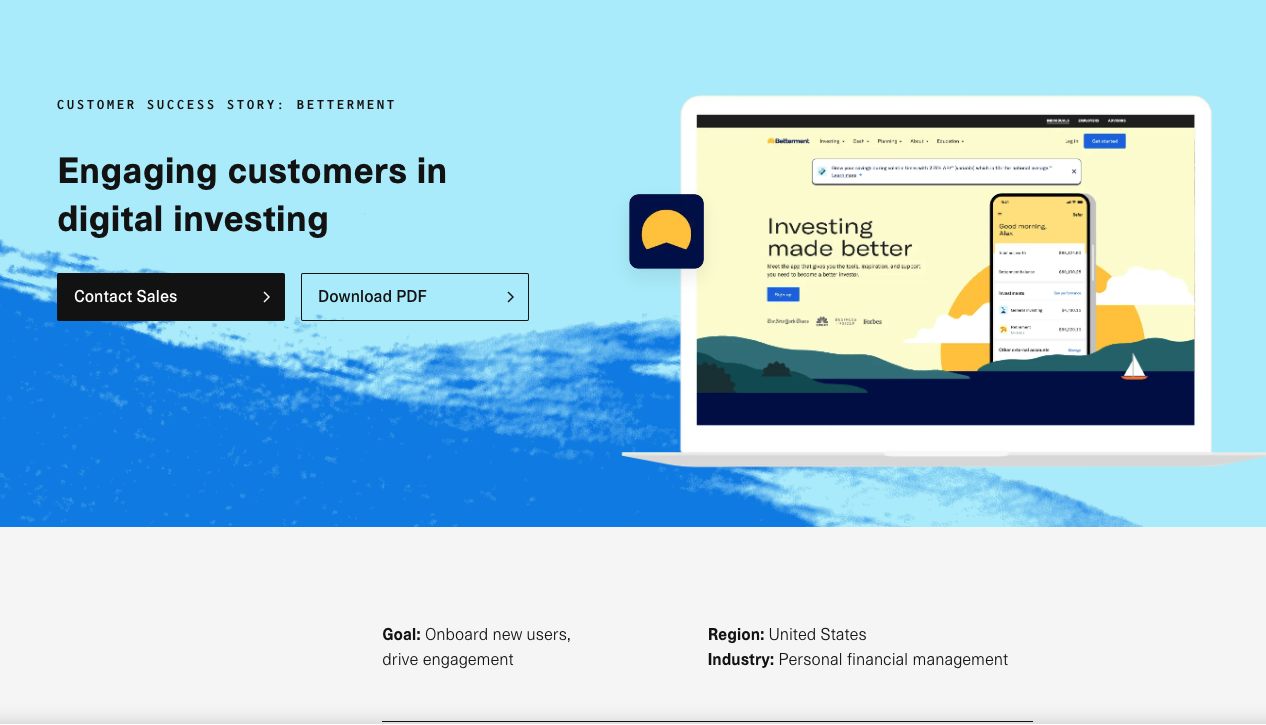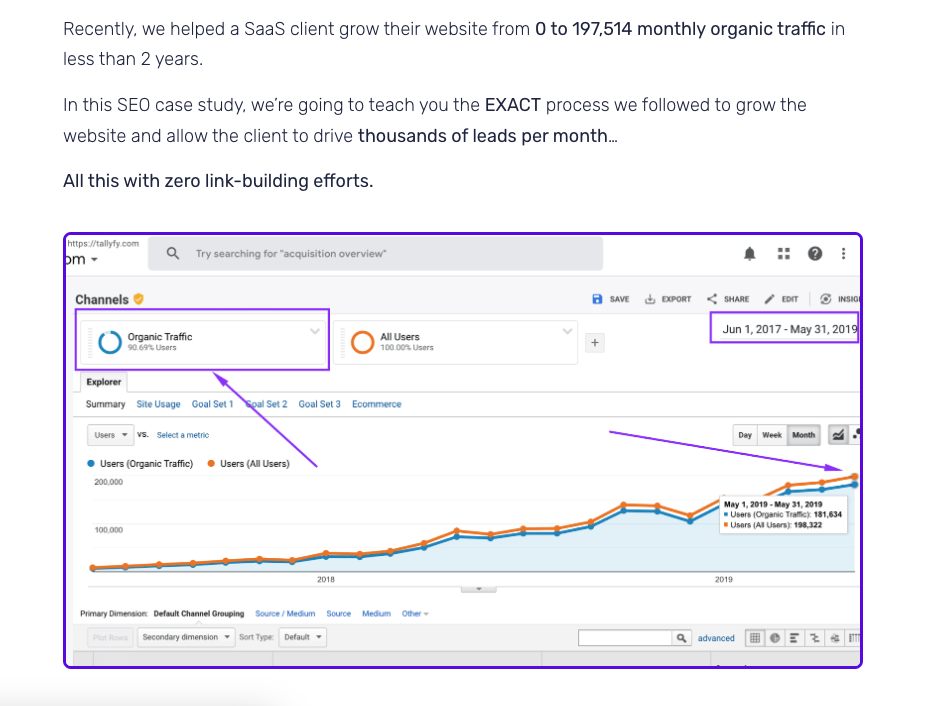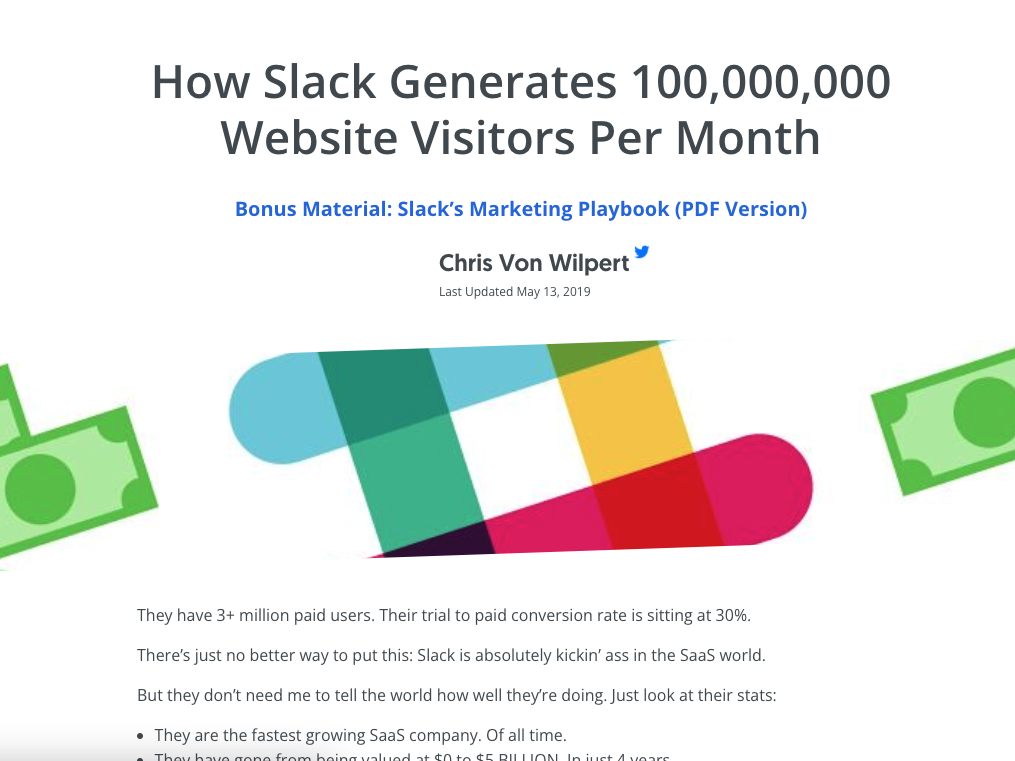
TLDR: Case studies can provide more value than almost any other content asset–from social proof to data-driven examples of product success; there’s not much to dislike about this kind of content. Here, we cover what makes these unique and provide examples and templates to guide your use.
So what? With the majority of marketers in the B2B industry leaning on case studies as a cornerstone of their content mix, you must understand why. We’ll cover what you need to know to effectively bring these asset types into your campaigns by seeing how the best in several industries do it.
At Media Shower, we’ve created thousands of marketing materials for our clients. One of the best-performing types is the case study.
Across all clients.
Across all industries.
Instead of thousands of words of marketing fluff, a short and concise case study shows real results: a customer success story, a sample use case of your service, even a hypothetical way to use your product or platform.
In any case (ha!), case studies are powerful because they follow the marketing rule: show, don’t tell. Show the power of your product or platform, don’t just talk about it.
In this guide, we’ll break down our battle-tested best practices in developing case studies, including some of our favorite examples.
What Are Case Studies?
Case studies are stories.
The classic B2B case study is a story about:
1) a problem or challenge faced by a company
2) followed by a solution that your company implemented
3) and the outcomes that arose from that solution.
What sets case studies apart is their ability to showcase the effectiveness of a particular tool, technique, or service using a real-world example.
By providing readers firsthand insights into how products or services have benefited others, they demonstrate value while building trust.
Case studies are often used as sales collateral on various platforms, such as websites, email marketing, and social media, offering a tangible demonstration of a product’s or service’s success.
In marketing, we often use the mantra, “show, don’t tell.” Case studies show how your product, platform, or service has benefited a real company or customer. A case study is worth 5,000 words.
How Do You Structure Case Studies?
While case studies typically tell a story (following a Problem→Solution→Outcome format), there are a few components that will make your case study stand out.
- Context: The background of the case study, setting the stage for the reader. Here, you explain the problem and what needs to be solved. Setting the context allows you to highlight important aspects of a problem, like pain points or operational challenges, that will be important later in the study.
Example: Tesla’s Entry Into the U.S. Auto Industry | (MIT Management) - Strategies: Here, you focus on the reasoning behind any steps taken to address the initial challenge. It’s essential that the reader doesn’t just see that the solution worked, but understands why it worked: this elevates case studies above simple testimonials or product ads.
Example: How AppSumo Grew Organic Traffic 843% and Revenue from Organic Traffic 340% | (Omniscient) - Implementation: Some customers won’t get interested in the details… but many will, especially when understanding how a service or a solution works (or may work) for their company. The implementation section is a core space to highlight actual services without getting too sales-y.
Example: How Handled Scaled from Zero to 121 Locations with Hubspot | (Hubspot) - Results or Outcomes: A case study is typically only as useful as its results. Did it increase customers? Generate web traffic? Improve efficiency? The case study must highlight specific qualitative or quantitative outcomes: hard data or testimonials that showed the solution worked.
Example: Zip Saved $500k in Under 7 Months and Created Delightful Experiences with Intercom | (Intercom) - Analysis: Sometimes, outcomes speak for themselves. Other times, it helps to provide critical insights to help the reader connect the dots. This is a space to show some expertise and explain why the case study was so successful.
Example: Capital One Completes Migration from Data Centers to AWS, Becomes First US Bank to Announce Going All-In on the Cloud | (AWS)
Marketer’s Takeaway: Case studies work. According to the Content Marketing Institute, 73% of successful content marketers used case studies in their mix–more than any other form of content outside virtual events and short-form posts. Uplift Content reports that large SaaS companies (+500 employees) have 64 case studies in use at a given time–up 73% from 2022. They also show that SaaS companies of every size ramp up case study production, with a high end of 66% increased production.

Case Study Best Practices
A few best practices we’ve learned from generating case studies for B2B clients of all shapes and sizes:
- Focus on the Problem-Solution-Outcome Framework: Clearly outline the client’s problem, your product or service’s solution, and the benefits or results achieved. Discuss any challenges faced during the implementation of your solution and how they were overcome. Make sure that the outcomes and analysis provide real value, not just a demonstration of a solution.
- Include Quantifiable Results: If possible, uUse data and statistics to substantiate the results achieved. Metrics like ROI, increased revenue, cost savings, or improved efficiency are compelling. (If not, you can use qualitative feedback like positive quotes and testimonials.)
- Use Data Visualization: By that same token, provide precise data viz that pops from the text, drawing the reader into the story even as they skim it. Include charts, graphs, images, and infographics to break up text and illustrate key points.
- Use Stories to Drive Engagement: Craft a story that engages the reader. A well-told narrative makes the case study more relatable and memorable, and bringing in elements like quotes, internal conversations, and expert analysis of problems helps bring it to life.
- Incorporate Customer Testimonials: Direct quotes add credibility and authenticity. They provide a first-hand account of the customer’s satisfaction, providing your readers with social proof. Further, it signals that the company serving as the case study subject is happy with the results.
Marketer’s Takeaway: Offer the case study in various formats (like PDFs, videos, and blog posts) to cater to different customers. Share your case study through various marketing channels — your website, email newsletters, social media, and even in sales pitches. Use the document to tell this story across your website, social media, and customer interactions. Update your case studies regularly to keep them relevant, especially if they include data and statistics that could change over time.
Examples of Case Studies
Plaid: Engaging Customers in Digital Investing

Why We Like It: Payment service provider Plaid is well-known throughout most consumer spaces as an easy-to-use processor. This case study highlights another business side–specifically, a B2B case study discussing financial advisor Betterment. This study follows every best practice we’ve discussed: it follows a Problem→Solution→Outcome format, it uses data and visualization to emphasize successes, and it includes several levels of analysis, testimonials, and insight.
Apollo Digital: 7 Steps to 197, 514 Monthly Traffic

Why We Like It: This case study has it all… but more importantly, it gets deep. This data-driven report provides a birds-eye view of their report so you get the takeaway. Then, it spends the rest of the study providing strategies and results for a process they followed for nearly two years. It’s a great example of how to use case studies to educate readers and show that you are a leader in your field.
Sumo: How Slack Generates 100,000,000 Website Visitors Per Month

Why We Like It: Speaking of depth… Slack is one of the biggest messaging and productivity tools on the planet, and Sumo conducted a study to understand better how they became the “fastest growing SaaS company. Of all time.”
The results? A rich, story-driven, and data-supported case study that details the details. There is no stone unturned. If you want to understand better what it means to promote a platform from the ground up, this case study is a magic tome of information.
Sample Case Study Template
Title
Make sure the title is engaging and results-oriented.
Example: “How [Company] Transformed [Aspect] Resulting in [Outcome]”
Executive Summary
A concise overview of the story: Problem→Solution→Outcome.
Highlight critical statistics and outcomes.
Background
Introduction to the client: Industry, size, market position, pain points, and challenges. This can cover their specific challenge or opportunity later.
Challenges
Here, you cover the challenges and opportunities facing the customer. Be as specific and in-depth as possible because this section will set the tone for the rest of the study.
- Challenges: Was the subject struggling with a particular issue, a lack of resources, or expertise?
- Opportunity: Was the subject otherwise successful but looking to capitalize on market trends or opportunities they weren’t positioned to do then?
Solution
This section should include the details of strategy, implementation, etc. Include any reasoning behind strategic decisions, data that led to the determination of those decisions, and detailed descriptions of solutions, their implementation, and any issues that arose from that implementation.
Impact and Results
- Quantitative results: Revenue growth, efficiency improvements, etc.
- Qualitative results: Customer satisfaction, team morale, etc.
- Visual representations: Charts, graphs, timelines.
- Client testimonial and feedback
In-Depth Analysis
Dive into the results you’ve found. Don’t shy away from frankly assessing successes and shortcomings. Ensure that this analysis speaks directly to the strategies, implementation, and expected outcomes outlined earlier in the study.
- Deep dive into the strategy and its execution.
- Lessons learned and insights gained.
- How did the results impact the client’s broader goals?
- Future Implications
Call to Action
Appendices and Supplementary Material (If Necessary)
- Detailed data, complete interviews, technical specifications.
- Include any additional supporting documents.
The Future of Case Studies

The future of marketing case studies is likely to be influenced by several key trends. If you want to innovate on case studies today, consider implementing these future-forward ideas:
- Increased Personalization and Segmentation: As data analytics and AI become more sophisticated, case studies will likely be more personalized to the interests and needs of specific audience segments. (Imagine case studies that dynamically adjust to cater to individual reader preferences, or industry-specific scenarios.)
- Interactive and Immersive Experiences: Integrating interactive elements, such as clickable data points, augmented reality (AR), and virtual reality (VR), could make case studies more engaging. (Imagine case studies as fully-immersive stories.)
- Storytelling with Rich Media: Using videos, podcasts, and animations will become more prevalent, moving away from traditional text-heavy formats. (Imagine case studies as an animated series or a podcast.)
- Sustainability and Social Responsibility Focus: Case studies might increasingly highlight a company’s commitment to sustainability and social responsibility, resonating with growing consumer and business interests. (Imagine case studies highlighting your DEI initiatives.)
- Co-Marketing Case Studies: Partnerships between brands can lead to collaborative case studies, showcasing how combined solutions or services can solve complex problems, intending to provide marketing for both brands. (Imagine case studies with a strategic partner.)
Make the Case to Your Potential Customers
Case studies are one of the most effective ways to communicate your value proposition to prospective customers and clients. But they take real time and effort to do well.
If you have a story to tell and need help bringing your case study to life, take Media Shower for a test drive.